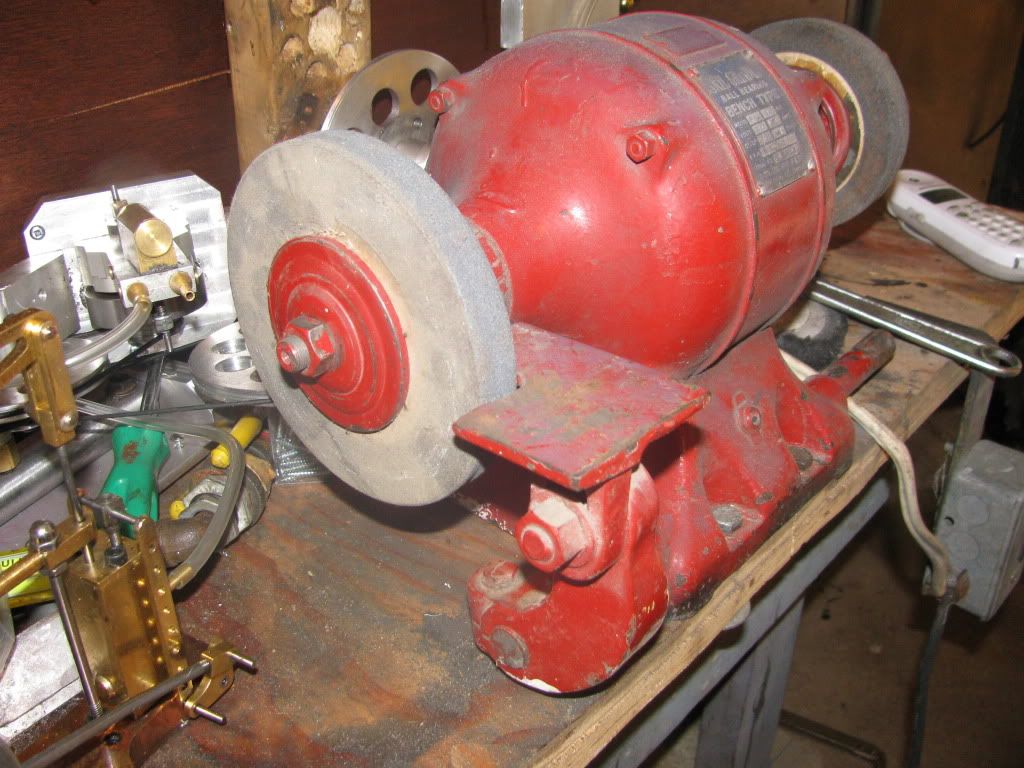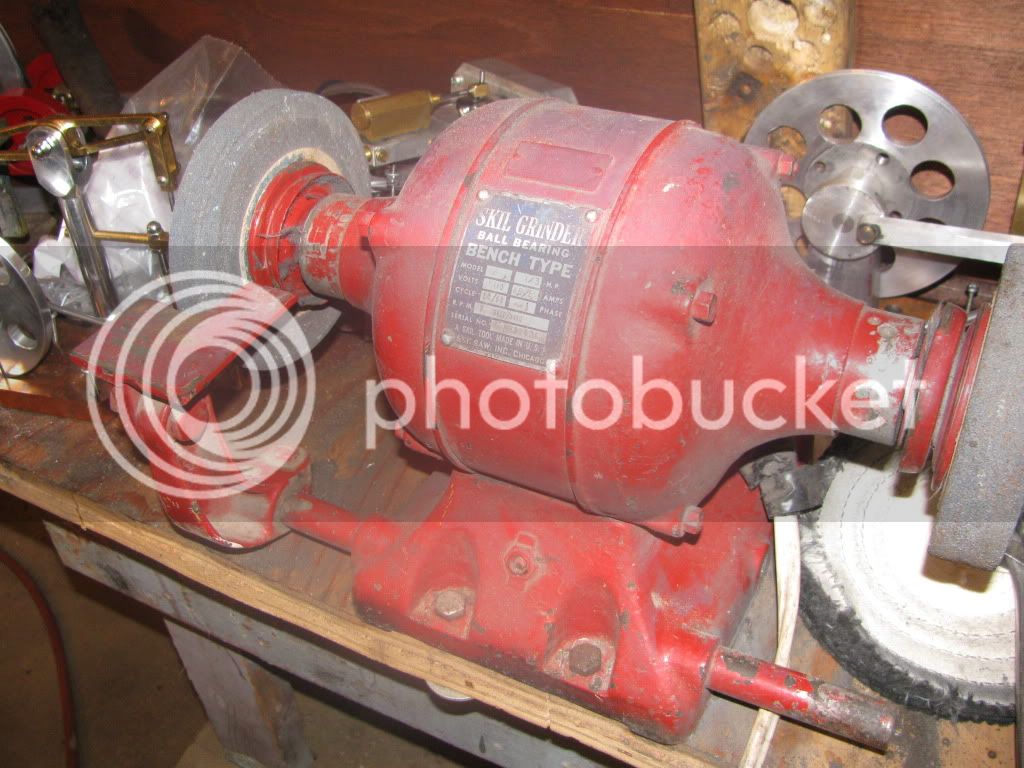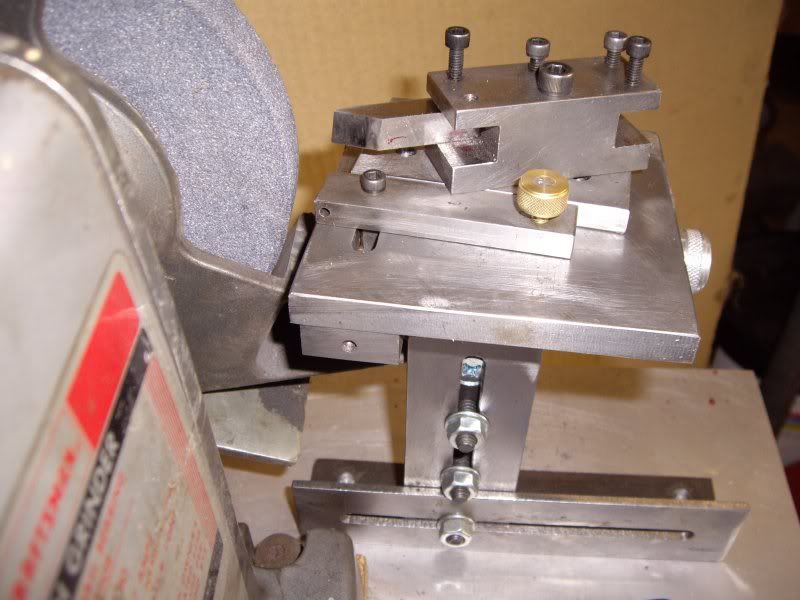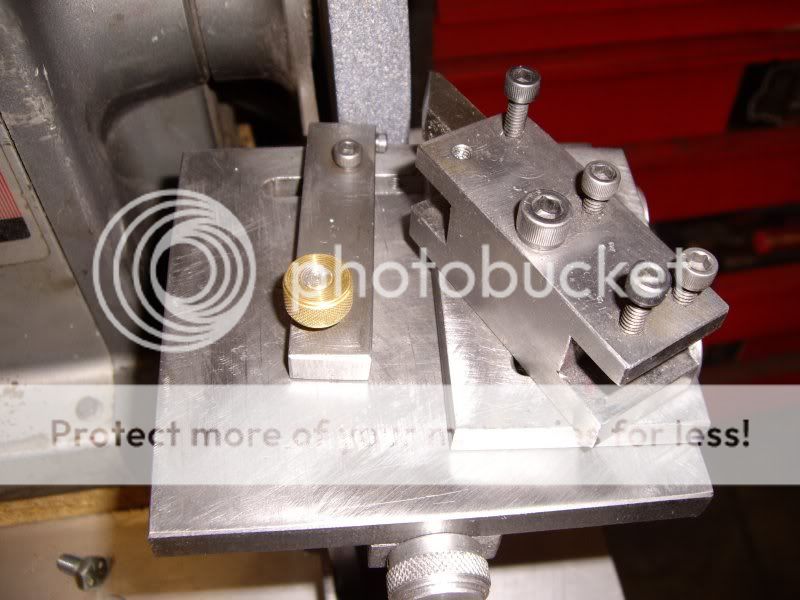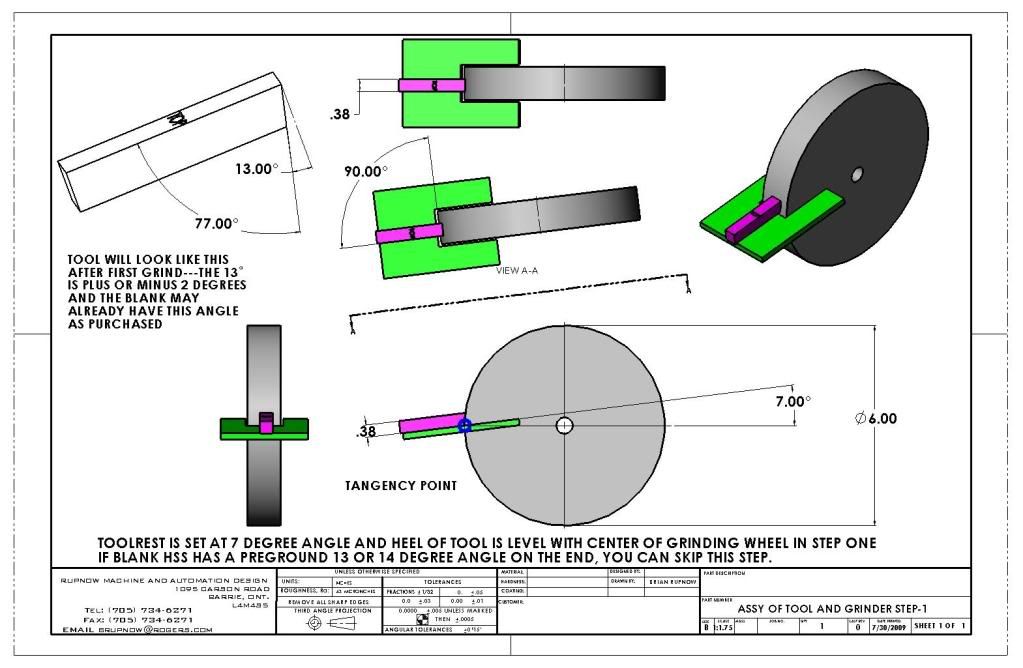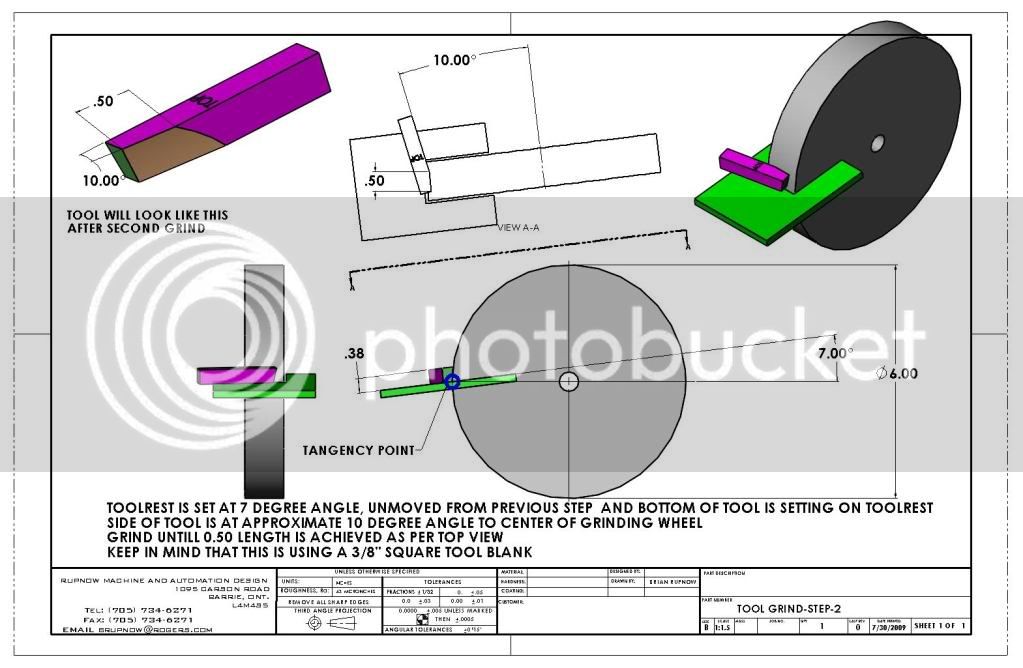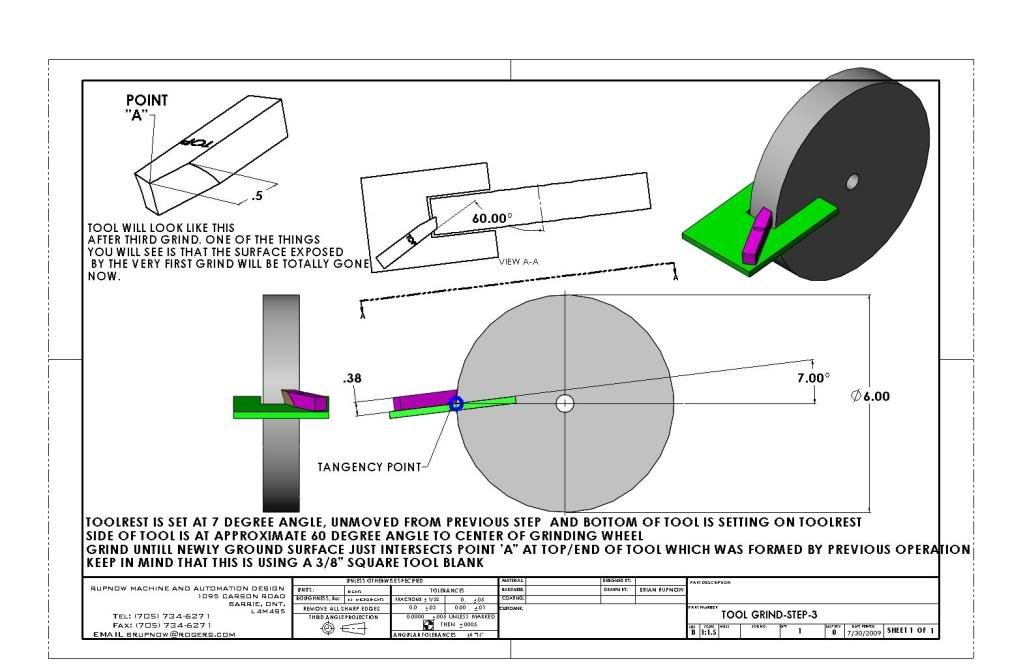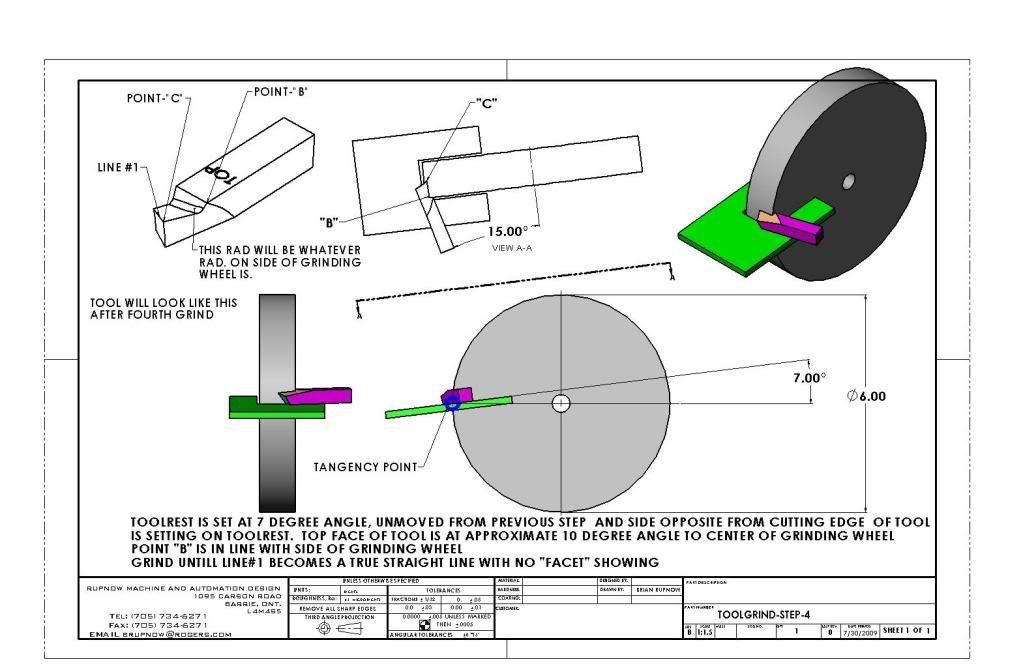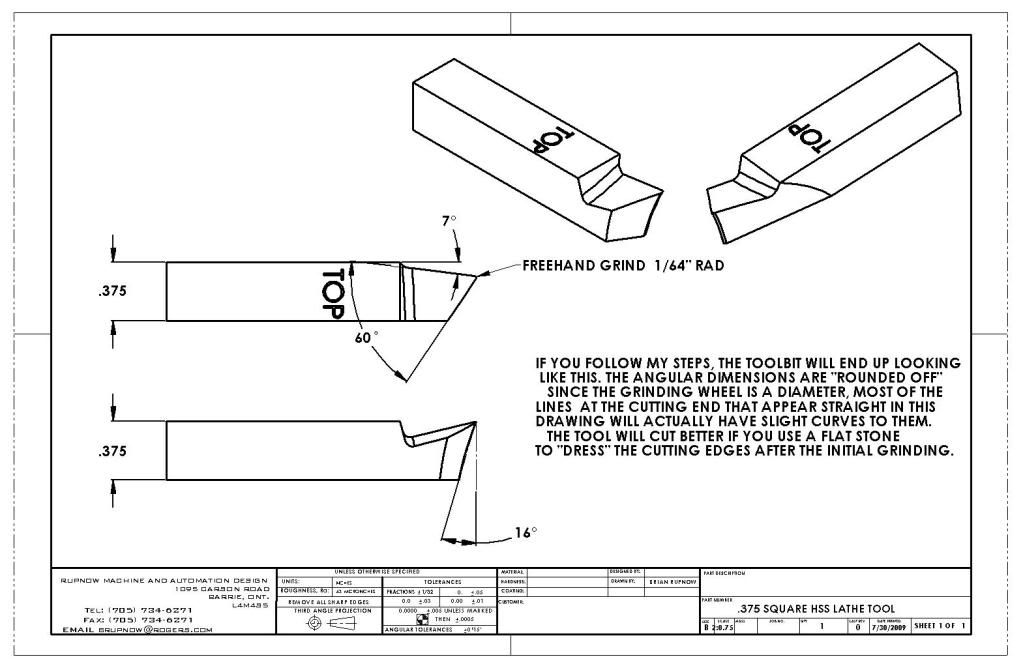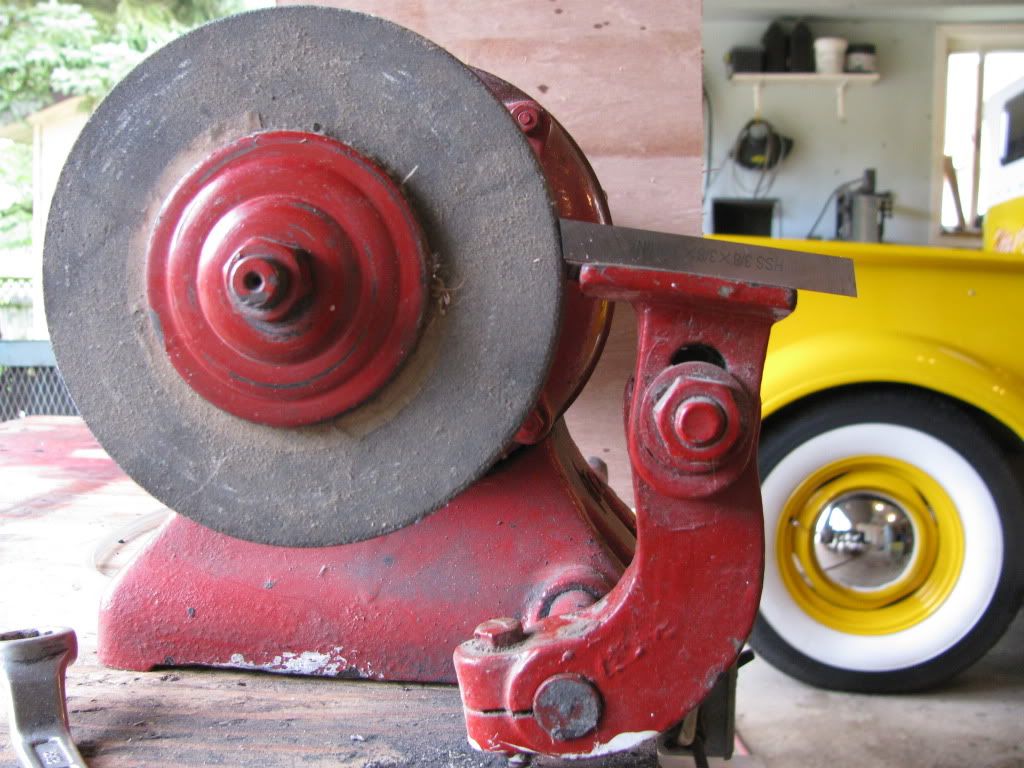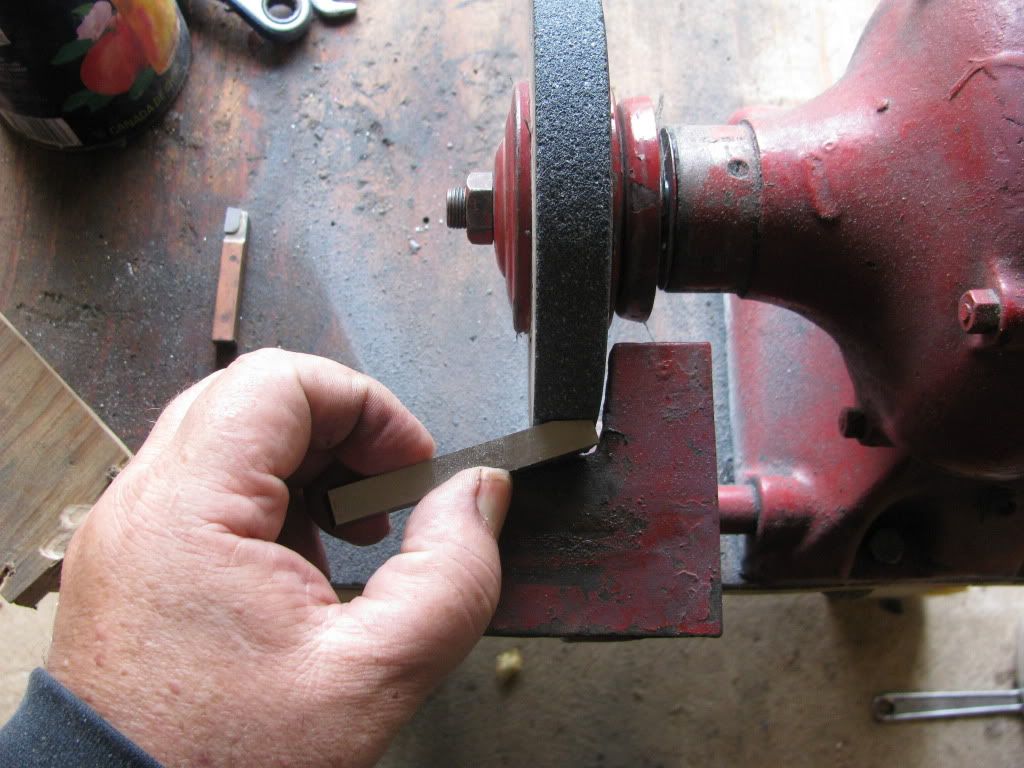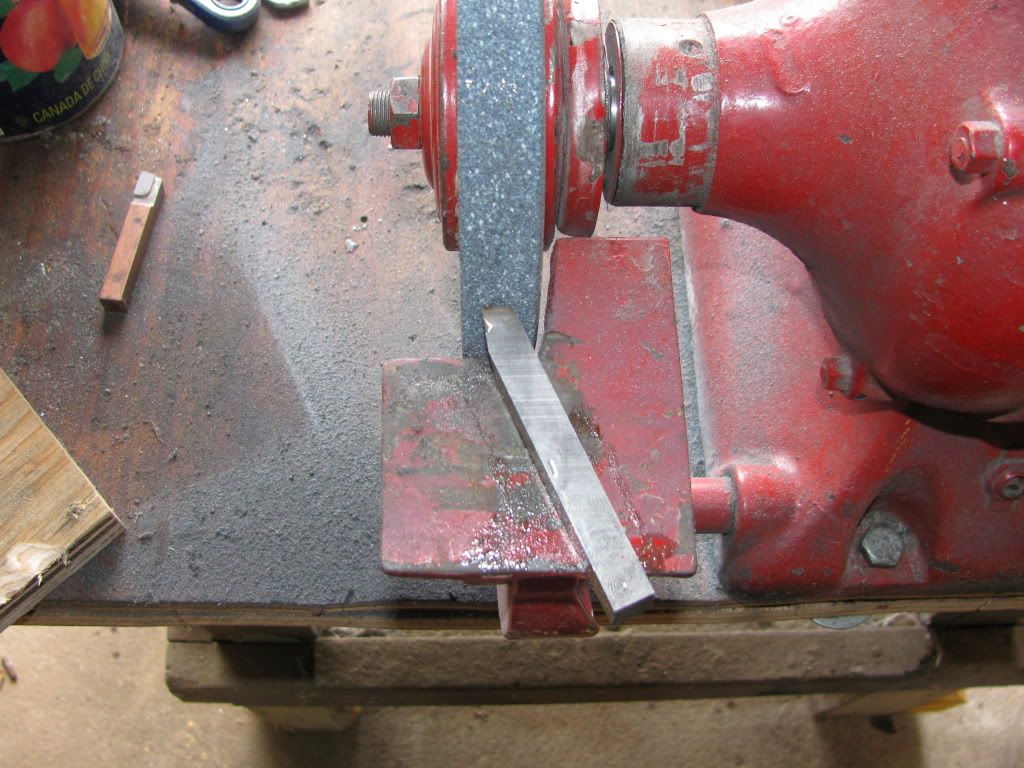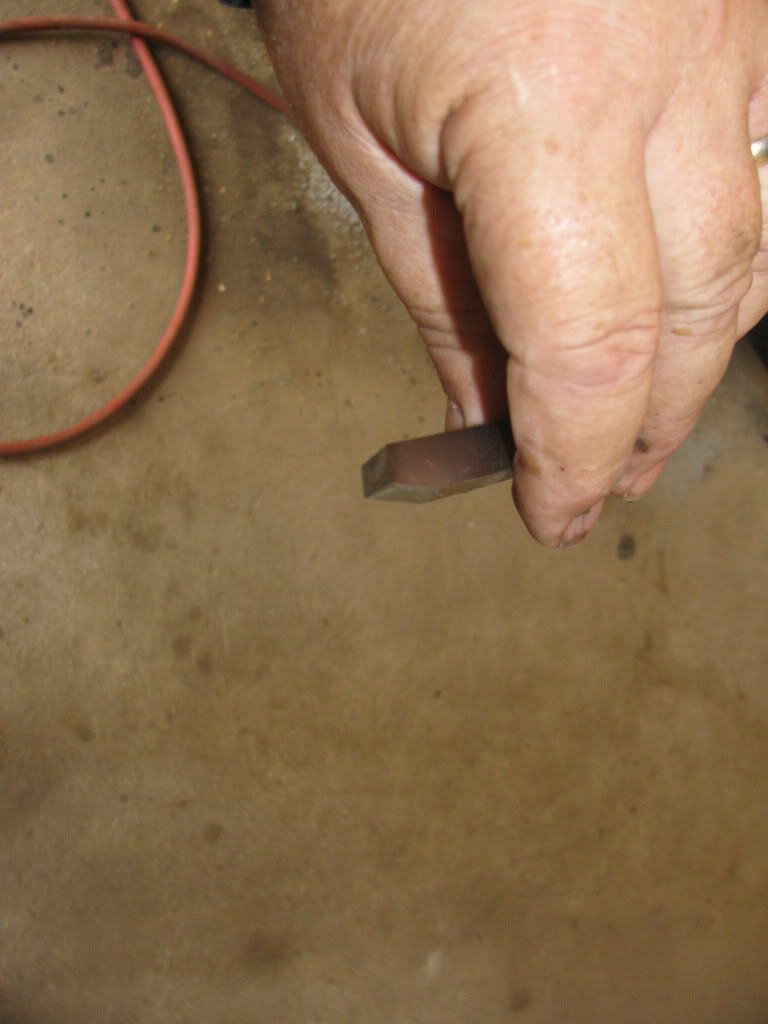I may be opening a can of worms here, but---I am tired of the horrible finish I get with my cheap Chinese carbide lathe bits. I an beginning to do a bit of research on grinding my own lathe cutting tools from HSS. I have an old 3400 RPM dual end grinder that my father bought when the local blacksmith finally closed up shop.--You can see it in the attached picture, behind all the small engines (Its red). This grinder is a bit like me---its pretty damned old, but it still works good. In the picture it is set up with 8" diameter polishing buffs.
I am wondering about tool grinding jigs to ensure that I get the correct angles on the tools I grind, and sources of good information on grinding my own tools from HSS.----Brian
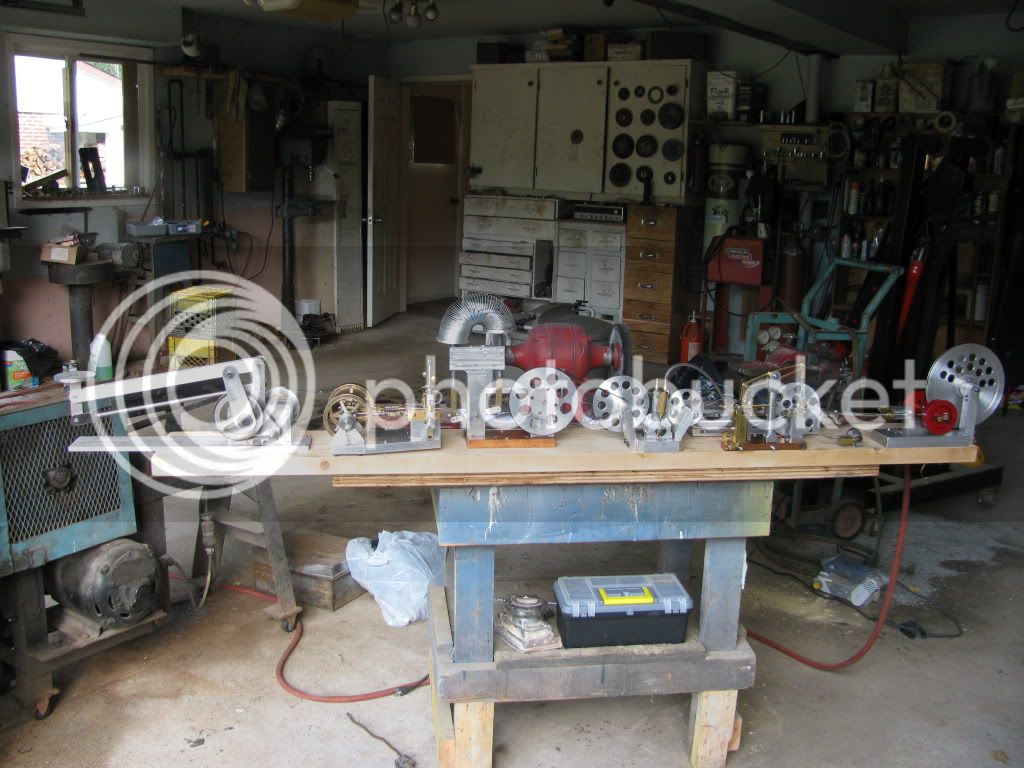
I am wondering about tool grinding jigs to ensure that I get the correct angles on the tools I grind, and sources of good information on grinding my own tools from HSS.----Brian






